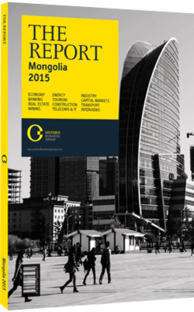N. Zoljargal, Governor, Bank of Mongolia (BOM): Interview

Interview: N. Zoljargal
What is the importance of attracting increased foreign investment? How has balance of payments (BoP) pressure impacted economic stability?
N. ZOLJARGAL: The economy of Mongolia has landed softly and adjusted well during a severe BoP shock in 2013-14. Over the past five years, 88% of exports have consisted of mineral commodities and 80% of foreign direct investment (FDI) flows have been into the volatile mining sector. Thus, the economy has been heavily dependent on extractive industries.
When global economic growth slowed down, uncertainties in the regional investment environment lingered and a super-cycle in commodity prices ended, so the conditions for the terms of trade have worsened since the end of 2011. Net FDI has dramatically decreased, from $4.6bn, or 44% of GDP in 2011, to only $0.4bn, or 3% of GDP, in 2014. The BoP shock has thus caused a sharp decline in net foreign assets.
If economic stabilisation measures had not been taken in 2013, external shocks could have caused financial sector instability, a 50% deterioration in domestic asset values and the loss of over 180,000 jobs. Indeed, the BOM has successfully mitigated impacts of BoP shocks on the economy by increasing net domestic assets through unconventional monetary policy measures, which enabled the economy to absorb external shocks via a flexible exchange rate and foreign exchange reserves. The BOM has increased its buffer and added cushions by extending its local currency swap line with China and increasing the size of the swap line to $2.5bn.
As a result, Mongolia has avoided a painful and costly hard-landing scenario and the economy has been saved from a credit crunch, broad money contraction, the loss of thousands of jobs and financial instability. This is due to the counter-cyclical macroeconomic policies implemented to bolster stability. The economy is still adjusting and is expanding by a healthy rate of 6-7%, but it also needs more capital inflows to maintain long-term sustainable economic growth.
How has the BOM adjusted its monetary policy in light of the economic slowdown?
ZOLJARGAL: During the BoP shocks in 2013, the BOM implemented both standard and unconventional monetary policy measures. The Monetary Policy Committee (MPC) at the BOM eased the monetary policy stance by cutting the policy interest rate by 275 basis points, from January through June 2013, in order to stabilise monetary and credit growth, ensure the smooth functioning of the financial system, promote domestic credits and investments, support the real sector, and stimulate economic activities under the guidance of soft-landing policies.
The BOM also promoted the real sector through bank credits in order to reduce supply-driven inflationary pressure, support banking sector liquidity, prevent a potential credit crunch, preserve jobs and increase middle class savings by prudently changing the structure of household expenditures.
As a result, foreign trade has been balanced for the first time since 2006, dramatic shrinkage of the private sector has been prevented, consumption has been smoothly reduced and household savings have increased thanks to the sustainable mortgage financing scheme. According to the evidence, the BOM’s unconventional policies directly produced 5.1 percentage points of the 11.6% real GDP growth in 2013.
The MPC changed its monetary policy stance further in July 2014 and increased the policy interest rate by 150 basis points in order to relieve and neutralise BoP difficulties, curb inflationary pressure, ensure financial stability in the medium and long term, prevent potential macroeconomic risks, and protect the real incomes of individuals under a comprehensive macro adjustment plan. This measure and the Price Stabilisation Programme have helped decrease annual inflation from 14% in 2012 to 11% in 2014 and then 9.3% for the first three months of 2015. The share of the consumer price index that is supply-driven inflation also fell 33% in 2010-12 to just 5% in 2014.
You have reached the limit of premium articles you can view for free.
Choose from the options below to purchase print or digital editions of our Reports. You can also purchase a website subscription giving you unlimited access to all of our Reports online for 12 months.
If you have already purchased this Report or have a website subscription, please login to continue.

